Botanical Names
Cosmos caudatus
Common Names
| Malaysia | Bintang berayun, ulam raja |
| English | Cosmos |
| Indonesia | Kenikir, pelampong, radamindang, randa midang, semikir, dewadaru |
| Thailand | Daoruang-phama, khambae |
| Phillippines | Turay-turay, tutukaw, cosmos |
Family
Compositae
Introduction
Ulam raja originates from Latin America and brought to Malaysia and other Southeast Asian countries through the Philippines. In Malay the word ulam raja literally means the “the King’s salad”. Ulam raja is one of the very popular Malaysia salad and served throughout the country from major hotels for tourists to buffet lunch and dinners.
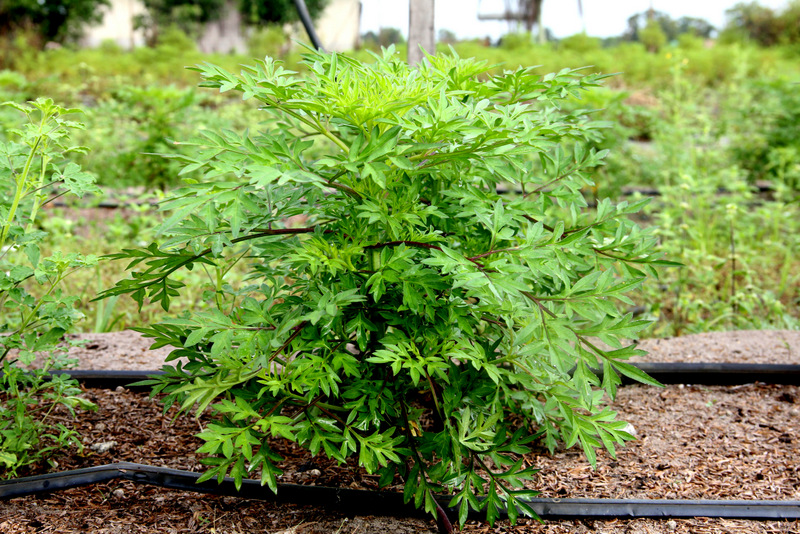
Morphological Features
Ulam raja is an annual erect growing plant and able reach up 2 m in high. The stems are square in shape, succulent, having a lot of branches and purplish green in colour. It has compound leaves, having a very district pungent smell, green in colour, narrow leaf tips, smooth margins and measuring about 15-20 cm long. The flowers can be found solitary or in a loose clusters and are produced on a single stalk on auxiliary heads. It has long stalk (about 25 cm), 8 petals measuring about 1 cm wide and whitish pink in colour. The fruits are needle shape, very small (about 1 cm long), has hair at the tip and dark brown in colour when matured.
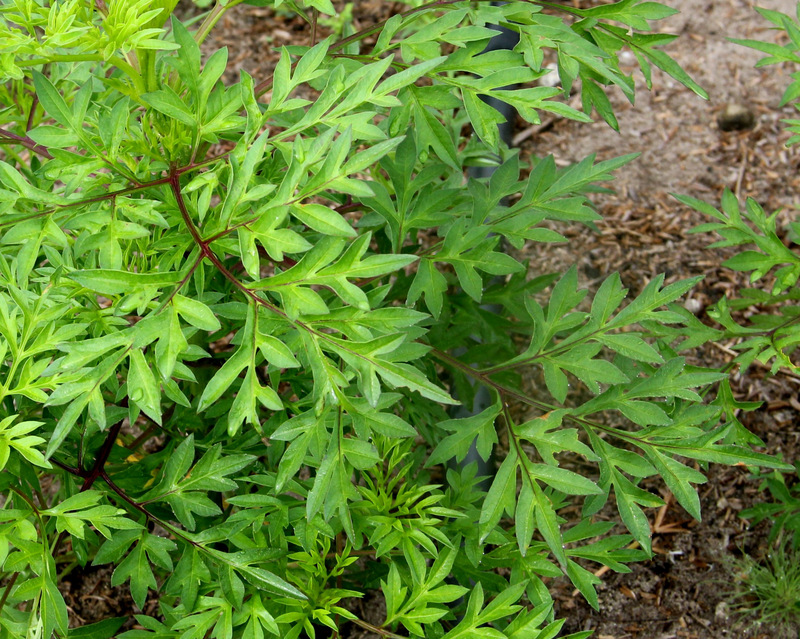

Medicinal Properties and Usage
Ulam raja is one of the most popular salad among the Malays in Malaysia. It is believed that it is good for health, helps to improve blood circulation, strengthen bones and promotes fresh breath. It is also taken to improve appetite. Ulam raja is also believed to have anti-aging properties. This is related to its high content of saponins, flavonoids and polyphenols.
Soil Suitability and Climatic Requirement
Ulam raja grows very well in tropical climate having a well-distributed rainfall through out the year with the total rainfall of about 1,500 – 2,500. The plant grows well on various soil types as long as the soil is fertile, high organic matter content, friable and good drainage. Ulam raja is a short-term crop and it takes about 3-4 months from planting to the last harvest. Proper timing in planting is important to utilise the rainfall pattern of the planted area.
Field Preparation
Land Preparation
Proper land preparation is important to improve the soils structure and eradicate weeds. One round of disc plough followed by two rounds of rotovation is sufficient to obtain a friable soil. The first rotovation is done to prepare the area for liming activity if the pH is low (acid soil). The second ploughing must be carried out after liming to ensure the lime is well incorporated into the soil to obtain the optimum effect.
Production of Planting Materials
The seeds are used as the source of planting materials in the production of ulam raja. The seeds are very small and thus it is recommended that the seeds be first sown on the Styrofoam sowing trays. The germinated seedlings are then transplanted into the seedling trays at about 2-3 weeks after sowing. At this stage, the seedlings are 6-8 cm high and have 2-3 pair of leaves. The seedlings are then raised for another 4-5 weeks in the seedlings trays before field planting are carried out.
Field Planting
The recommended planting distance is about 40 cm within rows and 50 cm between rows on the bed. Three rows of crops can be planted on the bed measuring 150 cm wide. This gives the population density of about 50,000 plants per hectare.
Field Maintenance
Fertilisation
Both the organic and inorganic compound fertiliser is required for the maximum growth of ulam raja. The organic fertiliser (chicken manure) at the recommended rate of 10 t/ha is applied at seven days before planting. It is incorporated into the soil to a depth of 15 cm from the soil surface. The compound fertiliser (N:P:K = 10:10:10) at the rate of 500 kg/ha and 250 kg/ha is recommended for bris sandy soil and alluvial soils respectively. The compound fertiliser is broadcasted on to the surface of the planting bed at planting.
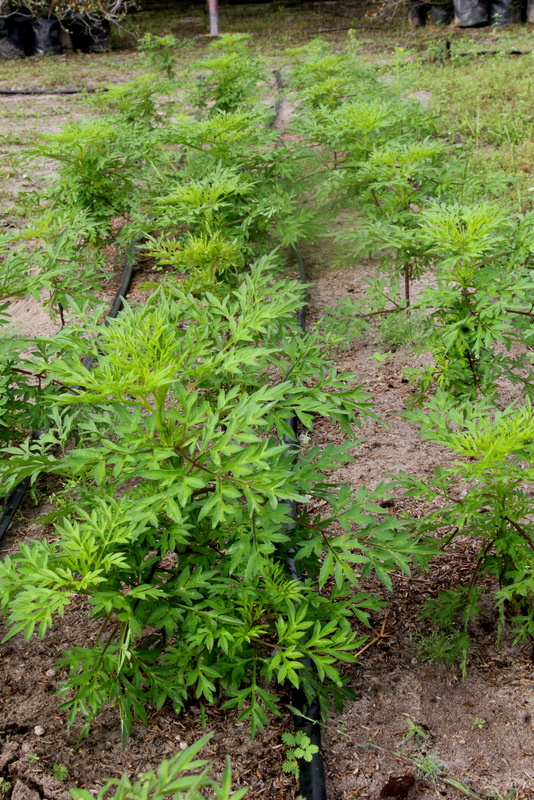
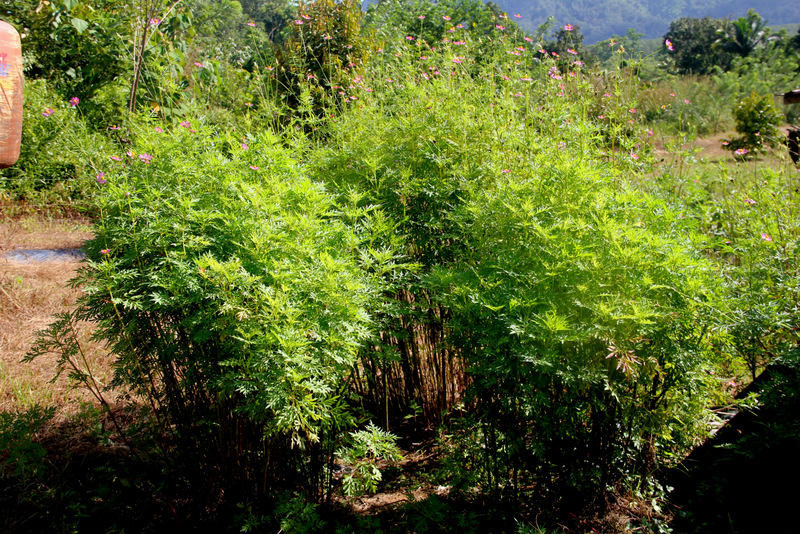
Weed Control
Proper land preparation before planting is the key in controlling weeds in the field. Manual weeding while incorporating the side dressing fertilisers into the soil is an important practice for weed control. Organic mulching can also help to reduce weed problem in ulam raja.
Water Management
Proper management of water is important for the maximum growth of ulam raja. Optimum water supplies will helps to promote vegetative growth and thus delaying the production of flowers. Depending on the availability of water and soils types, the irrigation system that can be used are either drip or sprinkler irrigation.
Pest and Disease Control
Currently, there are no serious pest and disease problems on the field planting of ulam raja. However, practising good sanitary practices are important to ensure that there are no unwanted infestations of pests and diseases from the other crops.
Harvesting
First harvesting of ulam raja can be carried out at 8-10 weeks after field planting by cutting 20-30 cm the top young growing shoots. These harvest constitutes about 30% leaves and 70% stems. The subsequent harvesting can be carried out at about 4-5 weeks intervals. Replanting must be done after 4 harvests. The potential fresh yields for the four harvests are 5-6 t/ha. The potential dry yield is about 800 kg/ha.
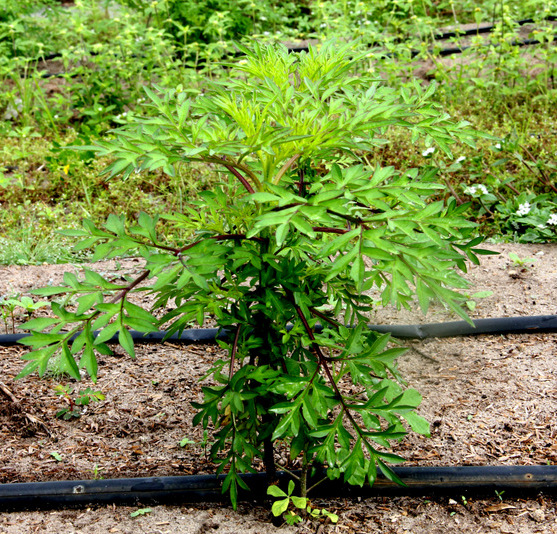
Postharvest Handling
Proper drying is important to ensure that the quality of the dried raw materials can be easily maintained. The harvested plant parts should be dried to about 10-12 % moisture content. Studies conducted shows that at this level of moisture content, about 6 kg of fresh leaves are required to produce 1 kg of dried leaves. The commercial cabinet drier or commercial drying barn can be used to dry the harvested materials.
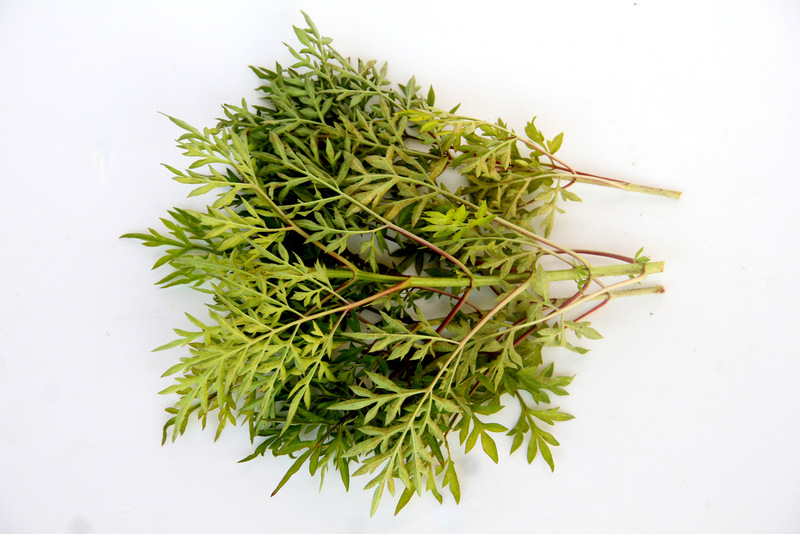
Estimated Cost Of Production
The estimated cost of production for ulam raja is about RM8,000 per hectare. At the production level of about 5 t/ha of fresh leaves, the production cost of fresh leaves are about RM1.60 kg/ha. The production cost was estimated based on the cost of current inputs during writing of this article.
Read more
References
- Bodeker, G. (2009). Health and Beauty from the Rainforest: Malaysian Traditions of Ramuan. Kuala Lumpur: Didier Millet
- Hassan, Dr. W. E. (2006). Healing Herbs of Malaysia. Kuala Lumpur: Federal Land Development Agency
- Musa, Y., Azimah, A.K. and Zaharah, H. (2008). Tumbuhan ubatan popular Malaysia. Serdang: MARDI, pp 214.


